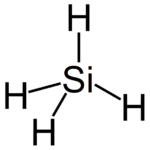
The increased popularity of indirect aesthetic restorations has led to the constant development of new adhesive systems being introduced to clinicians (Abad-Coronel et al). In this context, adhesive systems for glass ceramic restorations have suggested different protocols; using an intermediate adhesive layer following etching or cementing glass ceramic restoration directly with a resin-based luting agent (Sundfeld Neto et al; El Zohairy et al).
The aim of this article is to evaluate the influence of an adhesive layer application on the bond strength of etched and silanized glass ceramics to resin-based materials.
Methods
Searches were conducted in the PubMed, Scopus and ISI Web of Sciences databases, no language or date restrictions were applied. Two reviewers independently analysed and selected studies, abstracted data and assessed study quality with a risk bias scoring system.
Two meta-analyses were carried out where mean difference (MD) was applied for studies reporting their outcome with the same method while a random-effect model was used when studies were non-functionally equivalent. Results were presented using MD with a 95% confidence interval (95% CI).
Results
- 15 studies were included in the systematic review.
- 2 of the studies showed a low risk of bias, 12 at moderate risk and 1 at high risk.
- 14 studies were included for the quantitative analysis, excluding the study at high risk of bias.
- The quantitative analysis involved two different meta-analyses:
- Evaluation of the association between shear and microshear bond strength and adhesive layer application in nonaged and aged specimens (Table 1).
- Evaluation of association between microtensile bond strength and adhesive layer application in nonaged and aged specimens (Table 2).
- Heterogeneity was varying from moderate to high among study specimens.
Table 1.
| Shear / microshear studies | No. of Specimens | MD [95%CI] | P value |
| Nonaged | 258 | 1.36 [-0.18, 2.9] | 0.080 |
| Aged | 55 | 0.89 [-1.04, 2.82] | 0.370 |
| Total | 313 | 1.19 [-0.02, 2.41] | 0.5 |
Table 2.
| Microtensile studies | No. of specimens | MD [95%CI] | P value |
| Nonaged | 152 | -1.49 [-2.48, -0.50] | 0.003 |
| Aged | 65 | -3.87 [-5.63, -2.11] | <.001 |
| Total | 217 | -2.07 [-2.93, -1.20] | <.00001 |
Conclusions
The authors concluded: –
-
An adhesive layer application did not improve the bond strength of etched and silanized glass ceramics to resin-based materials.
-
The results may have been influenced by the type of in-vitro test applied and the medium and high heterogeneity of the meta-analysis, further reinforcing the difficulty of standardizing in vitro studies
-
Further studies with standard methodologies, mainly the aged ones, need to be conducted.
-
The influence of an adhesive layer application should be evaluated under clinical conditions.
Comments
The authors have searched 3 major databases with no restriction on languages and aimed to follow the PRISMA and PICOS guidelines. A total of 530 specimens were included among 14 in vitro studies to carry out the quantitative analysis. Unfortunately, the studies show a majority of studies with a medium risk of bias with only two studies with low risk of bias. The medium to high level of heterogeneity of the two meta-analyses shows limitations in comparing the selected in-vitro studies and therefore could have impact the results of this review.
The authors emphasize the fact that adhesive restoration must remain successful over time and therefore the need studies assessing the durability of these restoration over. Only 5 studies included in the meta-analyses subjected specimens to long-term aging conditions. Further research with standardised in-vitro studies including long term aging conditions are necessary to confirm the current findings. Furthermore, and as mentioned in their conclusion, the authors highlight the need to evaluate the influence of an adhesive layer application under clinical conditions.
Links
Primary paper
Nogueira IO, Oliveira PFG, Magno MB, Ferreira DMTP, Maia LC, Rabello TB. Does the application of an adhesive layer improve the bond strength of etched and silanized glass ceramics to resin-based materials? A systematic review and meta-analysis [published online ahead of print, 2020 Feb 19]. J Prosthet Dent. 2020;S0022-3913(20)30010-X. doi:10.1016/j.prosdent.2019.12.005
Other references
Abad-Coronel C, Naranjo B, Valdiviezo P. Adhesive Systems Used in Indirect Restorations Cementation: Review of the Literature. Dent J (Basel). 2019;7(3):71. Published 2019 Jul 1. doi:10.3390/dj7030071
Sundfeld Neto D, Naves LZ, Costa AR, et al. The Effect of Hydrofluoric Acid Concentration on the Bond Strength and Morphology of the Surface and Interface of Glass Ceramics to a Resin Cement. Oper Dent. 2015;40(5):470-479. doi:10.2341/14-133-L
El Zohairy AA, De Gee AJ, Hassan FM, Feilzer AJ. The effect of adhesives with various degrees of hydrophilicity on resin ceramic bond durability. Dent Mater. 2004;20(8):778-787. doi:10.1016/j.dental.2003.05.010
Photo credits
By Jrockley – English Wikipedia [1], Public Domain, Link
